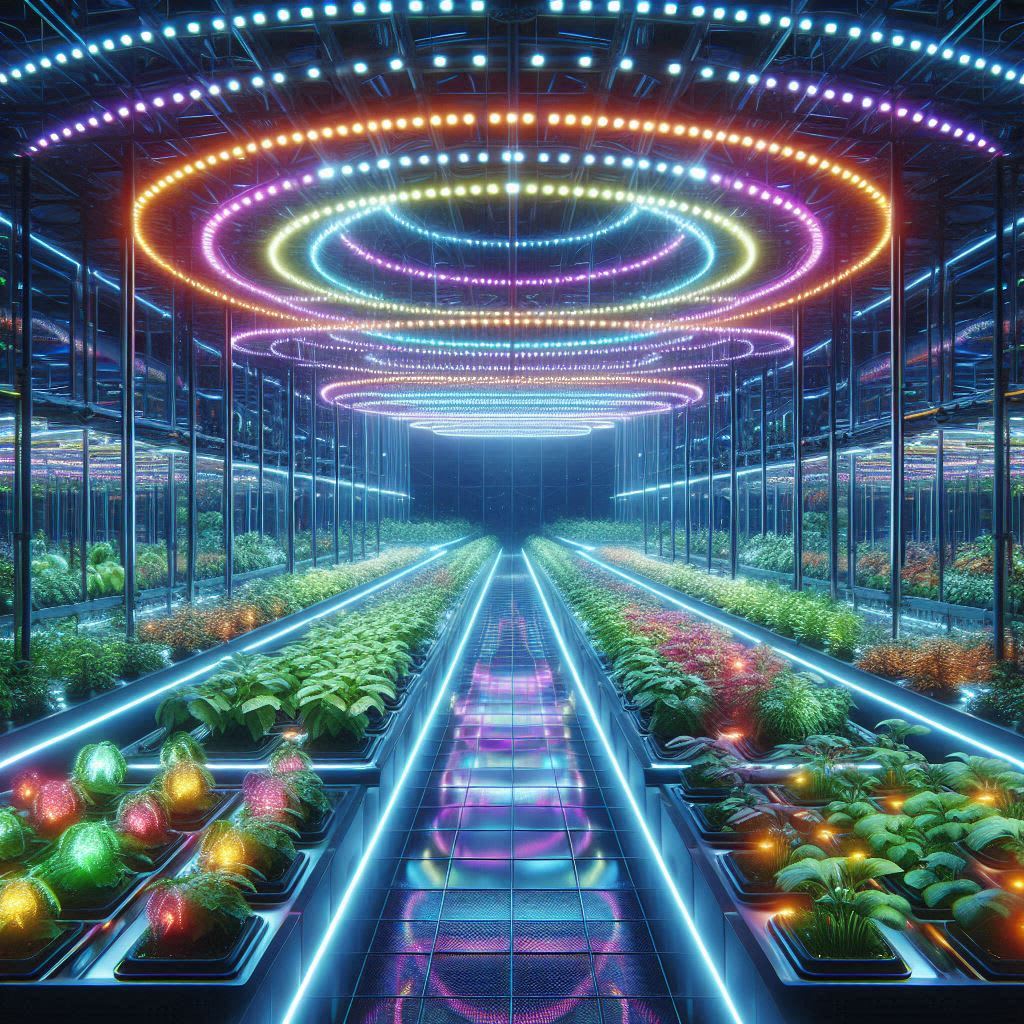Farming with Photons: Illuminating a Sustainable Food Future
How Light Technology is Revolutionizing Agriculture

Light Fantastic: Illuminating the Future of Food with Photonics
Imagine a world where crops grow stronger and healthier, guided by the precise manipulation of light. This isn't science fiction; it's the exciting potential of photonics, a rapidly advancing field that harnesses the power of light for groundbreaking applications in agriculture. As the global population surges and climate change disrupts traditional practices, sustainable food production is no longer a luxury, it's a necessity. Here's how photonics is emerging as a game-changer, illuminating a brighter future for our food systems.
Why Photonics Matters: A Revolution in the Making
Our current food production systems face a multitude of challenges. Climate change disrupts weather patterns, leading to droughts and floods that threaten crop yields. Traditional farming methods can deplete soil nutrients and contaminate water sources. Meanwhile, the global population is projected to reach nearly 10 billion by 2050, putting immense pressure on our ability to produce enough food.
Photonics offers a beacon of hope in this complex scenario. By harnessing the unique properties of light, researchers are developing innovative solutions to enhance food production and security. But how exactly does it work?
Shining a Light on the Science: How Photonics Works
Photonics utilizes light particles, or photons, for various applications. In agriculture, the focus is on manipulating light spectrums to influence plant growth and health. Here are some fascinating ways photonics is being implemented:
- Precision Lighting: Different light wavelengths can trigger specific responses in plants. By using LED lighting systems that emit targeted wavelengths, farmers can optimize photosynthesis, enhance nutrient uptake, and even influence flowering and fruit production. Imagine greenhouses bathed in customized light, fostering optimal growth conditions for different crops.
- Plant Stress Detection: Plants under stress, due to disease, pests, or nutrient deficiencies, often exhibit subtle changes in their light reflection properties. Photonic sensors can detect these minute variations, allowing for early identification of problems and enabling targeted interventions. This not only improves crop health but also minimizes the need for chemical pesticides.
- Food Quality Monitoring: Light-based techniques can be used to assess the quality and freshness of food products. Photonic sensors can detect spoilage indicators, measure sugar content in fruits, and even identify the presence of harmful pathogens. This empowers farmers, retailers, and consumers to make informed choices about the food they produce, sell, and purchase.
Beyond the Lab: Real-World Applications Taking Root
While photonics is still in its early stages of agricultural application, several pioneering projects are demonstrating its immense potential. Here are a few examples:
- Vertical Farms Illuminated by Photonics: In urban areas with limited land space, vertical farms are becoming increasingly popular. These indoor farms utilize stacked layers for growing crops, often aided by LED lighting systems. By incorporating advanced photonics principles, these farms can further optimize light usage and maximize crop yields.
- Precision Agriculture with Photonic Sensors: Large-scale farms are adopting photonic sensors to monitor soil moisture levels and nutrient content. This real-time data allows for targeted irrigation and fertilizer application, reducing water waste and optimizing resource utilization.
Combating Food Fraud with Photonic Spectroscopy: Consumers deserve to know where their food comes from and what it contains. Photonic spectroscopic techniques can analyze food composition, helping to identify fraudulent practices like adulteration or mislabeling.
The Future of Food is Bright: Challenges and Opportunities
As with any emerging technology, photonics in agriculture faces some challenges. The initial cost of implementing sophisticated lighting systems and sensor technology can be high. Additionally, optimizing these systems for different crops and environments requires ongoing research and development.
However, the potential benefits far outweigh the initial hurdles. As the technology matures and production costs decrease, photonics has the potential to revolutionize food production on a global scale. Here's how:
- Increased Food Security: By enhancing crop yields and reducing losses, photonics can contribute significantly to feeding a growing population.
- Sustainable Practices: Optimized resource utilization with light-based techniques can minimize water waste and reliance on chemical fertilizers, promoting environmentally friendly farming practices.
- Improved Food Quality: Early detection of plant stress and precise monitoring of food quality can lead to safer, healthier, and more nutritious food for consumers.
Conclusion: A Brighter Plate for All
Photonics is more than just a scientific discovery; it's a ray of hope for a more secure and sustainable food future. As we delve deeper into the fascinating world of light, we unlock possibilities to nourish a growing population, minimize environmental impact, and ensure a brighter future for generations to come. From illuminating the growth of crops to ensuring the quality of our food, photonics is poised to play a transformative role in the way we feed ourselves. By embracing this innovative technology, we can cultivate a future where everyone has access to safe, abundant, and healthy food.
About the Creator
suren arju
Hi there! I'm Suren, your startup guide. Entrepreneur, writer, dreamer - I share insights, tips & stories to fuel your startup journey. Ready to explore, learn & win together? Join me & let's redefine how we launch, learn & leap!
Enjoyed the story? Support the Creator.
Subscribe for free to receive all their stories in your feed. You could also pledge your support or give them a one-off tip, letting them know you appreciate their work.





Comments
There are no comments for this story
Be the first to respond and start the conversation.